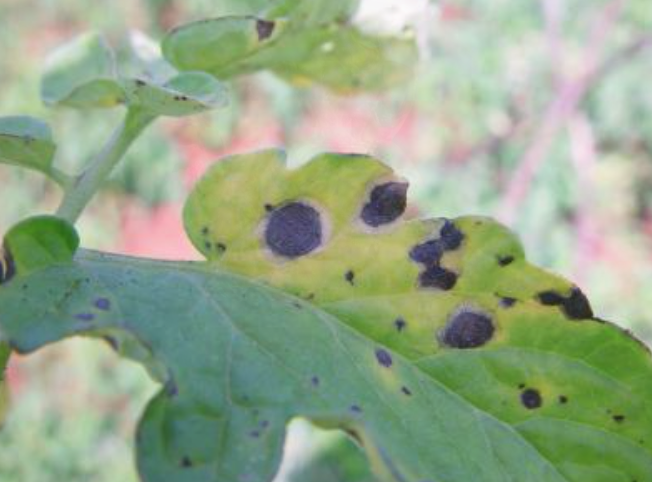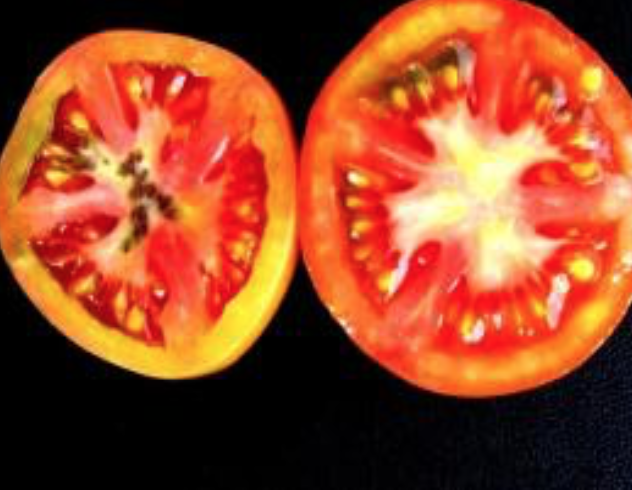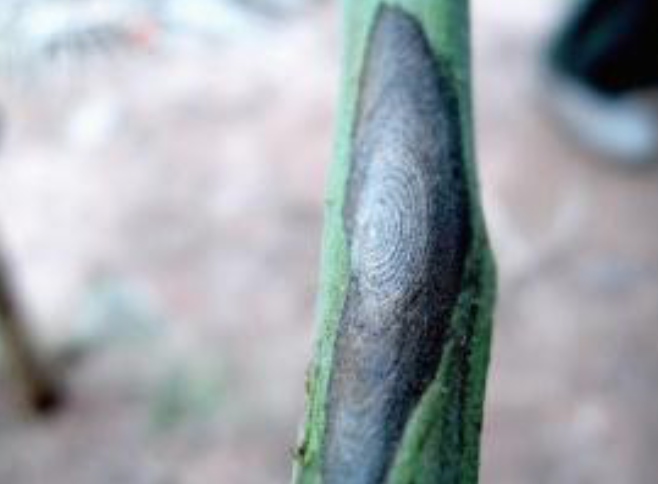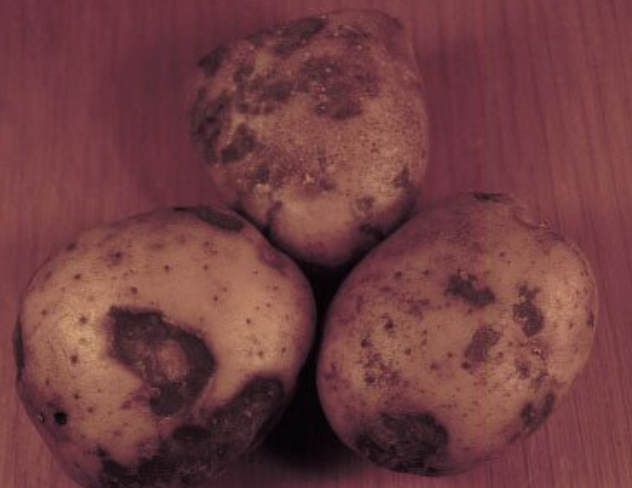Early blight (Alternaria solani)
Credit: Biovision-Infonet

(c) A.M. Varela & A.A.Seif, icipe

(c) A.A.Seif, icipe

(c) A.A. Seif

(c) A.A. Seif
Leaf spots of early blight are circular, up to 12 mm in diameter, brown, and often show a circular pattern, which distinguishes this disease from other leaf spots on tomato.
| What to do: Use resistant varieties (e.g. “Rio Grande”). Use certified disease-free seeds. If using own seeds, hot water treat the seeds. Use disease-free plants. Do not plant plant consecutively tomato crops on the same land. Practise rotation with non-solanaceous crops (e.g. brassicas, legumes, small grains). Stake and prune indeterminate varieties. If disease is endemic, applied preventative sprays of copper compounds (e.g. copper hydroxide). For more information on Copper click here. |
On Potatoes

Early blight results in surface lesions that appear a little darker than adjacent healthy skin. Lesions are usually slightly sunken, circular or irregular, and vary in size up to 2 cm in diameter. There is usually a well defined and sometimes slightly raised margin between healthy and diseased tissue. Internally, the tissue shows a brown to black corky, dry rot, usually not more than 6 mm. Deep cracks may form in older lesions.
Leaf spots of early blight are circular, up to 12 mm in diameter, brown, and often show a circular pattern.
On the potato tuber early blight results in surface lesions that appear a little darker than adjacent healthy skin. Lesions are usually slightly sunken, circular or irregular, brown and vary in size up to 1-2 cm in diameter. There is usually a well defined and sometimes slightly raised margin between healthy and diseased tissue. Internally, the tissue shows a brown to black corky, dry rot, usually not more than 6 mm. Deep cracks may form in older lesions.
Early blight thrives best under warm wet conditions.
What to do:
- Use certified disease-free seeds
- Practise rotation with non-solanaceaous crops.
- Practise good field hygiene. Remove infected leaves during the growing season and discard all badly infected potato plant debris at the end of each season.
- Avoid overhead irrigation and lay down a thick organic mulch to prevent soil splashing onto lower leaves.